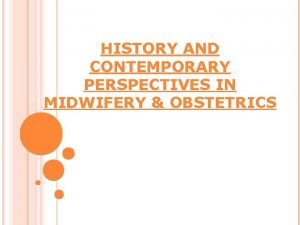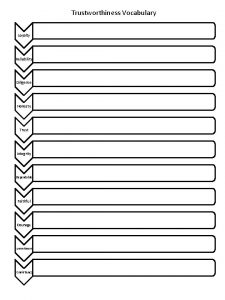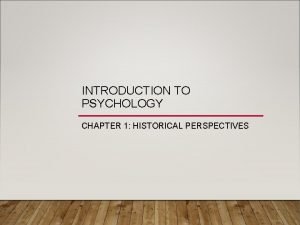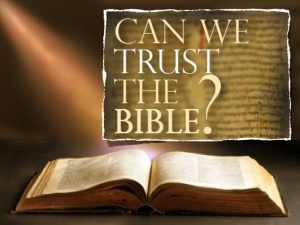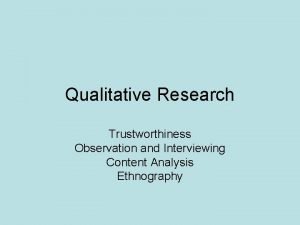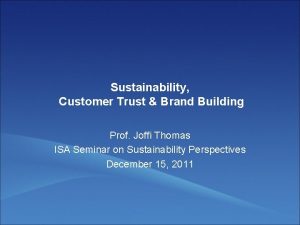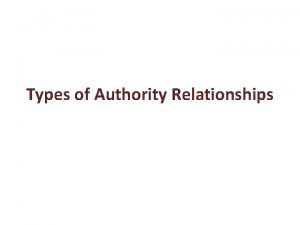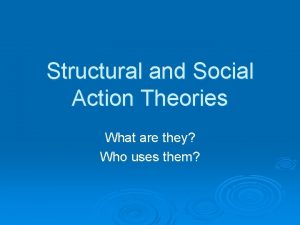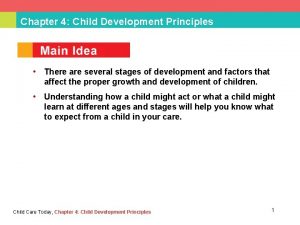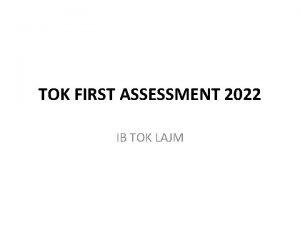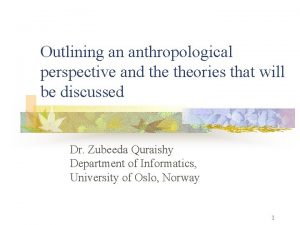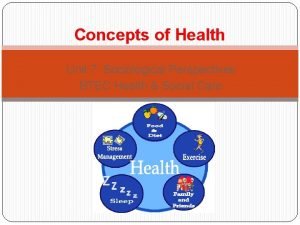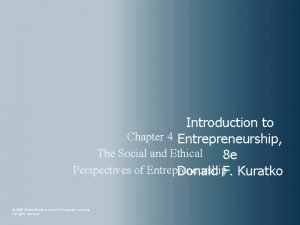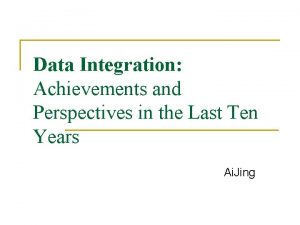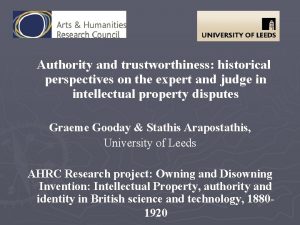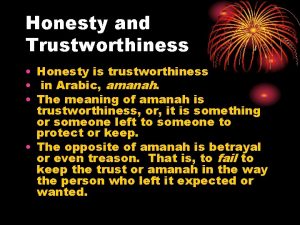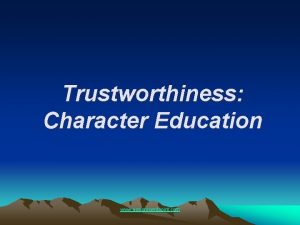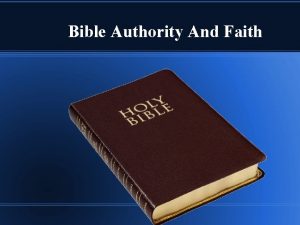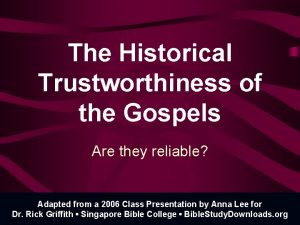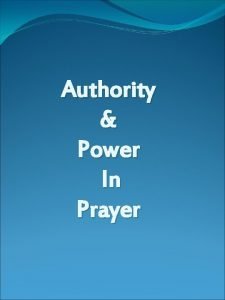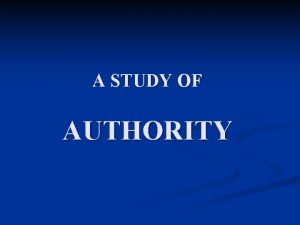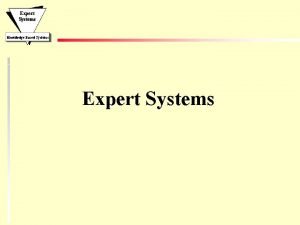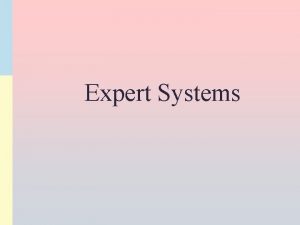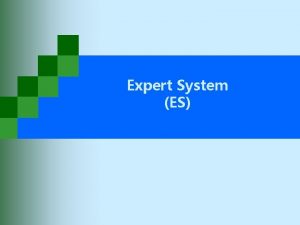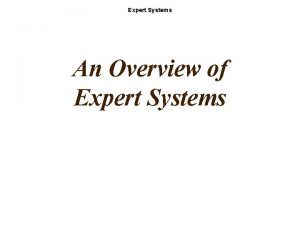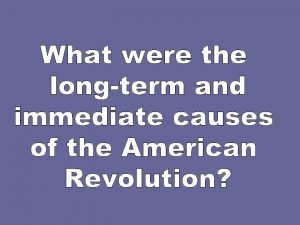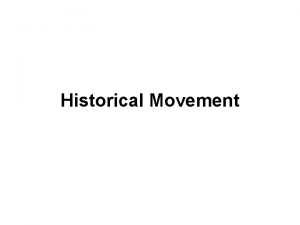Authority and trustworthiness historical perspectives on the expert














![Adversarial Reactions ► The Electrician: “flimsy” patent, Edison “overvalued” inventor, “…decline[d] to look up Adversarial Reactions ► The Electrician: “flimsy” patent, Edison “overvalued” inventor, “…decline[d] to look up](https://slidetodoc.com/presentation_image/66686446389767f13d1e8bba401f97cc/image-15.jpg)

- Slides: 16

Authority and trustworthiness: historical perspectives on the expert and judge in intellectual property disputes Graeme Gooday & Stathis Arapostathis, University of Leeds AHRC Research project: Owning and Disowning Invention: Intellectual Property, authority and identity in British science and technology, 18801920

OVERVIEW OF THE PAPER ► Introduction: trustworthiness in the courtroom ► Judicial discretion and the master patent: the Bassano case 1885 -86 ► The Varley case: Circulating Narratives and Authority ► (De)Constructing Evidence and Expertise in the Electric Lamps Industry ► Three concluding points

Introduction: trustworthiness in the courtroom ► Historic problem of conflicting expert testimony (Golan, 2003; Gooday 2008) - ‘Liars, damned liars and expert witnesses’ ► Judicial authority as decision about whom to trust: Experts? Judges? Which ones? Contrast positivist view of adjudication ► Trustworthiness - practical reliability and moral honour: major theme re experts authority in history of science & technology ► Performative view of authority - contrast Weber’s view of legal- rational authority of judges inhering in legal system ► Luhman: ‘confidence’ in established social systems vs interactive ‘trust’. Confidence in judges rather than trust? Criticisms and longer term shift to judges specializing in IP

Focus on the Judges Viscount Alverstone Justice Trayner Justice Linley Justice North (Richard Webster) Sir Edward Fry Lord Justice Cotton William Baliol Brett, Viscount Esher

Judicial discretion & master patents: the Bassano case Bell-Edison telephone patents in 1880 s contested, hence much litigation ► Validated in United Telephone Company vs Harrison Cox Walker, 1882: ► Key issue for speech: the transmitter Edison’s patent based on vibrating drum, with a current regulator made of lampblack (semi-conducting carbon). ► Judge Justice (Edward) Fry: found that defendants had infringed Edison patent. ► Construed patent broadly to cover all kinds of carbon & other semi-conductors ► Potentially a form of master patent. ► Early Bell telephone Edison patent transmitter

UTC vs Bassano & Slater 1885 -6 ► Telephone by George Bassano & E. Slater (Derby) 1885 – uses wooden board and tufts of silk to transmit speech. UTC lawyers: Sir Richard Webster & Fletcher Moulton ► Expert Witnesses: John Hopkinson, Frederic Bramwell and William Thomson – the elite set that usually won cases. ► Hopkinson & Bramwell testify: any vibrating surface was a diaphragm, irrespective of construction or material ► So Bassano vibrating wooden board infringes Edison patent ► Justice North invokes Fry judgement to uphold UTC claim ► In Court of Appeal, Lords Cotton, Lindley and Lopes uphold North’s judgement, again appealing to Fry. ►

Public Debate over Bassano Judgement June 1886 Focus on Fry’s claim that diaphragm was just “something that separates something from something else”. ► Technical Press gently critique competence of judges ► E. g. Telegraphic Journal and Electrical Review editorial: ► ‘How long are these sophistical definitions to stand? When will a judge throw to the winds the shifting and evasive assertions of partisan scientists, who quibble over gnat-like niceties, and, when it suits their purposes, complacently close their eyes whilst a whole camel is gulped down? ’ ► ‘No doubt the learned ones of the bench always seek to give righteous judgements[; ] but in their straining to be scientifically precise, they sometimes overlook the claims of common sense. ’ (Telegraphic Journal and Electrical Review, 19 (1886), 1) ►

Controversy over integrity in The Times Silvanus Thompson - Quaker physicist, inventor, expert Letter to the Times June 1886 Bassano case demonstrates “Judicial warping of patents”: judges and lawyers acted to suit the interests of “wealthy backers”. ► John Imray – Leading patent agent and expert ‘Judges who know their duty do not tie down the invention to the precise details given by the inventor … if they see that, notwithstanding variations of form, material, or arrangements of parts, some rival apparatus has in fact the “pith and marrow” of the original, they justly pronounce that to be an infringement. ’ ► Vitriolic exchanges in Times correspondence columns… ► Loss of confidence in judicial impartiality on patent matters? ►

Samuel Varley and the winding of dynamos Models c. 1870 by Zénobe Theophile Gramme (1826 -1901) ► New electrical power supply technologies of 1870 s/80 s – great need for high stability of supply voltage (esp for consumers) ► Winding dynamos and guaranteeing voltage regulation was a major technical challenge for electricians. Von Siemens, Gramme, Varley, Crompton, Kapp and Brush worked on the problem and patented techniques for winding. ► 1876 Samuel Varley filed patent No 4, 905 covering a form of dynamo and winding of the magnets for voltage regulation.

The Brush winding patent ► 1878 Charles Brush granted a patent in the name of Herbert John Haddan, Brush’s UK patent agent. Transferred to Anglo. American Brush Electric Light Corporation ► 1885 the company applied for patent amendment - prompting a challenge from both Siemens and Crompton companies. ► But case judged in favor of Anglo-American Brush company. ► 1886 Brush Corporation started action against infringers. Crompton Co had to agree to pay royalties and take licenses.

Samuel Varley vs. Anglo-American Brush Varley’s polemic in Telegraphic Journal (1887): i) His patent (No 4905) anticipated Brush invention ii) Brush knew about his inventions via a network of industrial intelligence iii) Compound winding was a method he had developed after 10 years experimenting & practical experience. iv) His notebook entries would prove his priority and long term commitment to experimentation Varley’s aims: ► to legitimize a master narrative about his invention ► to fashion himself as the ‘morally principled’ inventor who claimed credit not for justice and honour. ► to construct a public representation of himself as victim of influential scientific authorities (who could not accept an ‘outsider’ as himself).

King, Brown and Company vs. Anglo-American Brush Company ► October 1888, King, Brown and Co. , filed case against the Brush Co. to prevent any extension of the Haddan. Brush patent. ► 26 June 1889: King, Brown and Co. win case, Brush loses two appeals Varley’s vindication ► Judgement of Lord Trayner, on the outcome of the case: Regarding Samuel Varley “there is no doubt in my mind of his honesty” ► Varley thus established in court as inventor of compound winding, and trustworthy witness

From Swan to Edison-Swan The invention of the incandescent electric lamp was a highly contested matter both in Britain and in USA throughout the 1880 s. ► 1883 merger of Swan Electric Light Co & Edison Electric Co. ►BP No. 4576, 1879 Edison patent for incandescent lamps: general in its scope, thus a tool to block competitors ►Joseph Swan could establish possible priority ►Swan’s patents (No. 4933 (1880) & No 2 (1880)) on processes of carbonisation and effecting vacuum in the bulb important for manufacturing ► 1888 Edison and Swan Electric Light Co. vs William Holland ( Jablochkoff Co. , General Electric, Anglo-American Brush) ►

(De)Constructing Evidence and Expertise Judge Kay: verdict against Edison & Swan Company based on external expertise ► Expert: Sir George Gabriel Stokes (Cambridge Professor) ►conducted independent research and supervised relevant tests and experiments ►Stokes’ report: a. replication not guaranteed by the degree of disclosure in the specification b. questioned the workability and commercial success of Edison’s patented incandescent lamp. ► February 1889 - Court of Appeal: Lords Cotton, Lindley and Bowen judged in favour of the Edison and Swan Co. ► Judged Bowen: “The patent appears to me to claim in distinct and unmistakable language every combination of any carbonised filament …”. ►
![Adversarial Reactions The Electrician flimsy patent Edison overvalued inventor declined to look up Adversarial Reactions ► The Electrician: “flimsy” patent, Edison “overvalued” inventor, “…decline[d] to look up](https://slidetodoc.com/presentation_image/66686446389767f13d1e8bba401f97cc/image-15.jpg)
Adversarial Reactions ► The Electrician: “flimsy” patent, Edison “overvalued” inventor, “…decline[d] to look up to him as the greatest inventor of the age” ► Telegraphic Journal and Electrical Review (February 1889): “Of course the whole matter lies in a nutshell. Edison’s name is a sort of fetish, and the public, including the judges, have come to regard Edison as a sort of phenomenal inventor, and when he is advocated by such an awe-inspiring blunderbuss as the Attorney General seems to be, cool reason has very little chance of success. ”

Conclusions ► Confidence in judge’s authority: Critique of judges’ ability to provide sound and just verdicts reflecting social concerns about IP Shift towards specialized patent judges…? ► Diversity of trust relations in authority Trust in witnesses played key role in Varley & Edison-Swan cases. But judges qua authorities use trust in their adjudications rather differently. ► Longer term questions (relevant at present) What kind of networks of trust are appropriate for interaction between judges and experts? What is appropriate balance of judge’s specialist IP expertise vs. all-round judicial competence? Public accountability of judges in such matters?
 History of midwifery in india
History of midwifery in india Honesty vocabulary
Honesty vocabulary Historical perspectives of psychology
Historical perspectives of psychology Integrity examples
Integrity examples Trustworthiness in the bible
Trustworthiness in the bible Disadvantages of ethnographic research
Disadvantages of ethnographic research Dimensions of trustworthiness ability benovelnce integrity
Dimensions of trustworthiness ability benovelnce integrity Line authority means
Line authority means Social action theory examples
Social action theory examples Professional nursing practice: concepts and perspectives
Professional nursing practice: concepts and perspectives What are the 4 principles of child development
What are the 4 principles of child development Tok questions 2022
Tok questions 2022 Anthropological perspective and orientation
Anthropological perspective and orientation Unit 7 health and social care
Unit 7 health and social care Perspectives and methodology of economics
Perspectives and methodology of economics The social and ethical perspectives of entrepreneurship
The social and ethical perspectives of entrepreneurship Data integration problems approaches and perspectives
Data integration problems approaches and perspectives
